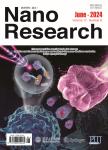Unveiling nanoplates-assembled Bi2MoO6 microsphere as a novel anode material for high performance potassium-ion batteries
作者机构:School of Metallurgy and EnvironmentCentral South Universityy Changsha 410083China
出 版 物:《Nano Research》 (纳米研究(英文版))
年 卷 期:2020年第13卷第10期
页 面:2650-2657页
核心收录:
学科分类:0808[工学-电气工程] 07[理学] 0809[工学-电子科学与技术(可授工学、理学学位)] 070304[理学-物理化学(含∶化学物理)] 0805[工学-材料科学与工程(可授工学、理学学位)] 0703[理学-化学] 0702[理学-物理学]
主 题:Bi2MoO6 microsphere potassium ion batteries mechanism anode
摘 要:Bismuth (Bi)-based electrode has aroused tremendous interest in potassium-ion batteries (PIBs) on account of its low cost, high electronic conductivity, low charge voltage and high theoretical capacity. However, the rapid capacity fading and poor lifespan induced by the normalized volume expansion (up to ~ 406%) and serious aggregation of Bi during cycling process hinder its application. Herein, bismuth molybdate (Bi2MoO6) microsphere assembled by 2D nanoplate units is successfully prepared by a facile solvothermal method and demonstrated as a promising anode for PIBs. The unique microsphere structure and the self-generated potassium molybdate (K-Mo-O species) during the electrochemical reactions can effectively suppress mechanical fracture of Bi-based anode originated from the volume variation during charge/discharge of the battery. As a result, the Bi2MoO6 microsphere without hybridizing with any other conductive carbon matrix shows superior electrochemical performance, which delivers a high reversible capacity of 121.7 mAh·g^−1 at 100 mA·g^−1 over 600 cycles. In addition, the assembled perylenetetracarboxylic dianhydride (PTCDA)//Bi2MoO6 full-cell coupled with PTCDA cathode demonstrates the potential application of Bi2MoO6 microsphere. Most importantly, the phase evolution of Bi2MoO6 microsphere during potassiation/depotassiation process is successfully deciphered by ex situ X-ray diffraction (XRD), X-ray photoemission spectroscopy (XPS), and transmission electron microscopy (TEM) technologies, which reveals a combination mechanism of conversion reaction and alloying/dealloying reaction for Bi2MoO6 anode. Our findings not only open a new way to enhance the performance of Bi-based anode in PIBs, but also provide useful implications to other alloy-type anodes for secondary alkali-metal ion batteries.



